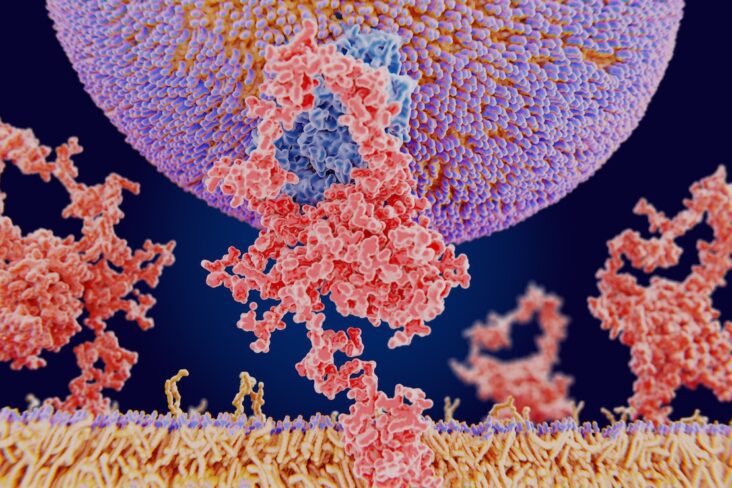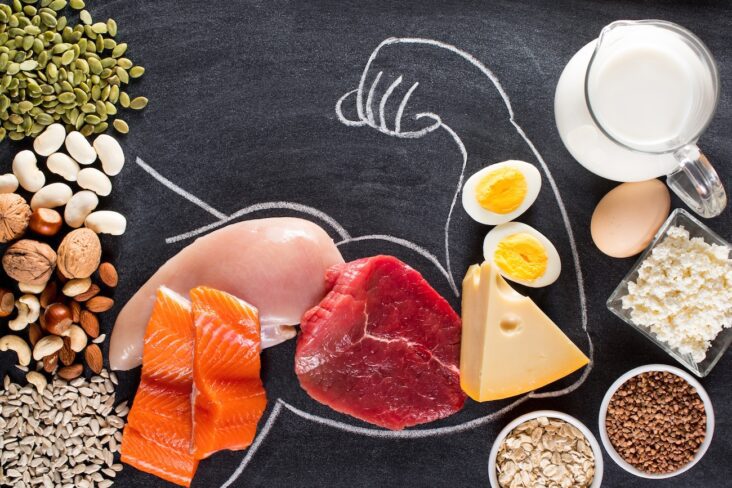
An article written by Dr Edward Leatham, Consultant Cardiologist © 2025 E.Leatham
Tags: Heart attack, CT angiogram, NH1, search website using Tags to find related stories.
For busy people, or to tune in when on the move, Google Notebook AI audio podcast and an explainer slide show are available for this story beneath.
What is Metabolic Syndrome?
Metabolic syndrome (MetS) is a common and serious health condition that significantly increases the risk of heart disease, stroke, and type 2 diabetes. It refers to a cluster of 3 or more of the following 5 rather general characteristics are present:
- Insulin resistance
- High blood pressure (hypertension)
- Elevated blood glucose
- High triglycerides
- Low HDL cholesterol (“good” cholesterol)
- Abdominal obesity (excess fat around the waist)
Metabolic syndrome is also known as insulin resistance syndrome, reflecting the central role that impaired glucose metabolism plays in its development.
Prevalence in the UK
Metabolic syndrome is increasingly common in the UK:
- An estimated 1 in 4 adults is affected, according to the NHS Learning Hub and HEART UK – The Cholesterol Charity¹.
- Prevalence rises sharply with age, with 30–40% of adults aged 65 and over meeting diagnostic criteria.
- It is strongly linked to overweight, obesity, and especially central (visceral) fat accumulation.
What Drives It?
Lifestyle Factors
Modern sedentary lifestyles and diets high in ultra-processed, high-glycaemic foods are major contributors. These behaviours promote:
- Energy imbalance
- Insulin resistance
- Visceral fat accumulation
Weight Gain
The global obesity epidemic has made metabolic syndrome more prevalent than ever.
Environmental Influences
Emerging evidence suggests that environmental stressors—such as air pollution—may also disrupt metabolic pathways and contribute to risk.
Why It Matters
Metabolic syndrome is not just a collection of risk factors—it’s a powerful predictor of chronic disease. It substantially increases the likelihood of:
- Coronary artery disease
- Atrial fibrillation
- Heart failure
- Stroke
- Type 2 diabetes
The Case for Early Action
Metabolic syndrome typically develops gradually. That means there’s a window of opportunity for intervention before full syndrome criteria are met. For cardiologists focused on prevention, this has led to a shift: identifying at-risk individuals earlier and intervening proactively.
But what do we call this early stage?
Introducing the Carbohydrate Sensitive Phenotype (CSP)
Carbohydrate Sensitive Phenotype (CSP) is a proposed term to describe a pre-syndromic metabolic pattern commonly seen in patients with:
- Waist-to-height ratio (WHtR) > 0.5
- Glucose spikes after carbohydrate-rich meals
- Normal or borderline weight, blood sugar levels and HbA1c.
CSP is not a diagnosis of diabetes or obesity. Rather, it’s a biologically driven pattern of visceral fat accumulation and carbohydrate intolerance—often triggered by age and Western-style diets.
CSP: A Name That Replaces Shame with Science
For decades, people with central weight gain were labelled as “lazy” or “undisciplined”—judged for their bodies without understanding the biology behind them. CSP reframes that narrative:
- It gives people a language to understand what’s happening in their body.
- It shifts the focus from blame to biology.
- It opens the door to support, not shame—empowering individuals to engage with health and nutrition without guilt.
In summary, early identification of CSP could allow for timely, targeted interventions that delay or even prevent the onset of metabolic syndrome and its complications. Naming the pattern is the first step in changing the story—and improving outcomes.
CSP shifts the narrative. It moves us from moral judgement to metabolic understanding.
It acknowledges that:
- Appetite regulation is attenuated in people with CSP
- Visceral fat accumulation is hormonally and genetically driven
- The modern Western diet overwhelms the carbohydrate tolerance of many people
- Even those trying their best may still see glucose spikes and VAT gain
Naming this Carbohydrate Sensitive Phenotype is not only medically useful—it is socially protective.
Just as we accept:
“I’m gluten-free because I have coeliac disease”
“I don’t drink milk because I’m lactose intolerant”
…people should feel equally safe and validated saying:
“I’m avoiding bread—I have CSP.”
“I’m limiting beer— as I have CSP.”
“I’m skipping dessert—I’m managing my CSP.”
These phrases are conversation starters, not excuses. They:
- Create space for others to ask questions, not pass judgement
- Empower people to make informed, confident food choices
- Help break the culture of shame around weight and dietary restraint
- Offer medical legitimacy to choices that may otherwise be misunderstood
In this way, CSP becomes not just a clinical term, but a social tool for advocacy, support, and visibility.
Clinical Profile
CSP is a clinically meaningful term for our patients who have:
- Raised waist-to-height ratio (>0.5), typically apple-shaped
- Post-meal glucose spikes, measurable via CGM
- Visceral adipose tissue accumulation
- Mild reductions in HDL or mild HbA1c elevations (still in the normal range)
- Normal or moderately elevated BMI
- Worsening with age, inactivity, stress, or carbohydrate load
- Often normal fasting glucose and insulin, despite glucose instability after meals
CSP can be considered to be a precursor to the well described metabolic syndrome.
Recommended Treatments for CSP
Dietary Approach: Modified Harvard Plate
The Harvard Healthy Eating Plate is a sound nutritional foundation, but for CSP patients trying to reduce VAT, it benefits from carbohydrate modification:
CSP-modified Plate:
- ½ plate non-starchy vegetables
- ¼ plate lean protein (fish, legumes, poultry, tofu)
- ¼ plate low-GI carbs (lentils, quinoa, oats) — or none in active fat loss
- Eliminate fruit juice, ultra-processed foods, sugary drinks
- Use CGM feedback to guide individual tolerance
Exercise Focus: Strength, Core and HIIT
VAT responds best to resistance training, core engagement, and high-intensity intervals:
- Strength training: improves glucose disposal via muscle
- Core training: enhances trunk control, activation, and function
- HIIT: shown to reduce visceral fat faster than steady-state cardio
Pharmacotherapy: Tirzepatide, Semaglutide and GLP-1 RAs
Semaglutide and Tirzepatide (a dual GIP/GLP-1 agonist) are now commonly used in clinical practice in patients with various heart conditions to:
- Reduce visceral fat and waist circumference
- Suppress appetite and sweet cravings
- Improve glycaemic stability and cardiometabolic markers
- Preserve lean mass during weight loss
- Improve event free survival
This may be appropriate even when labs are “normal”, as many CSP patients have hidden VAT and CGM-confirmed glucose spikes.
Technology Tools for CSP
- CGM: visualise individual glucose response to meals
- AI food logging apps: real-time nutritional feedback
Waist measurements: better than weight for VAT tracking
Summary
CSP is a highly prevalent, biologically driven phenotype of visceral fat accumulation and post-meal glucose dysregulation.
It does not require low HDL, high fasting glucose, or insulin resistance to diagnose.
What matters is the pattern: central fat gain, food-induced glucose spikes, and modern dietary overload.
Naming the condition helps remove blame and shame, and allows people to communicate dietary needs as confidently as someone with a food allergy or intolerance.
With personalised tools—diet, exercise, GLP-1s, and tech—CSP can be reversed, and lives can be changed.
Further reading
- NHS Learning Hub. Metabolic Syndrome. Accessed September 2025. Available from: https://learninghub.nhs.uk
- HEART UK – The Cholesterol Charity. Metabolic Syndrome. Accessed September 2025. Available from: https://www.heartuk.org.uk
- National Heart, Lung, and Blood Institute. Metabolic Syndrome. Updated August 4, 2022. Available from: https://www.nhlbi.nih.gov/health/metabolic-syndrome
- Look M, et al. Body composition changes with tirzepatide: fat vs lean mass. PMC11965027 (2025).🔗 https://www.ncbi.nlm.nih.gov/pmc/articles/PMC11965027/
- Rochira V, et al. Tirzepatide and visceral fat loss. PMC11431103 (2024).
🔗 https://www.ncbi.nlm.nih.gov/pmc/articles/PMC11431103/ - Maruo S, et al. VAT linked to HbA1c even in normal glucose tolerance. PMC7538500 (2020).
🔗 https://www.ncbi.nlm.nih.gov/pmc/articles/PMC7538500/ - Liao C, et al. GLP-1 RAs reduce VAT and liver fat: meta-analysis. PLoS ONE (2023).
🔗 https://journals.plos.org/plosone/article?id=10.1371/journal.pone.0289616 - Cooper DJ, et al. CGM reveals glycaemic spikes in non-diabetics. Front Nutr (2022).
🔗 https://www.frontiersin.org/articles/10.3389/fnut.2022.1070187/full - Luo B, et al. VAT linked to mild HbA1c elevation in non-diabetics. PMC10606363 (2023).
🔗 https://www.ncbi.nlm.nih.gov/pmc/articles/PMC10606363/ - Hegedűs ZI, et al. Tirzepatide preserves cardiac/metabolic health. Cardiovasc Diabetol (2025).
🔗 https://cardiab.biomedcentral.com/articles/10.1186/s12933-025-02806-5 - Battelino T, et al. CGM detects CSP-like sensitivity before diabetes onset. ScienceDirect (2025).
🔗 https://www.sciencedirect.com/science/article/pii/S0168822725001251 - Jarvis PRE, et al. Low-carb diet flattens glucose spikes in healthy individuals. Metabolism (2023).
🔗 https://www.metabolismjournal.com/article/S0026-0495(23)00244-5/pdf - Tirzepatide reduces fat mass, preserves muscle. The Cardiology Advisor (2025).
🔗 https://www.thematologyadvisor.com/news/tirzepatide-significantly-reduces-fat-mass-preserves-lean-mass/ - https://www.scvc.co.uk/metabolic-health/how-to-mix-glp-1s-hotels-travel-and-hospitality-a-modern-survival-guide/
The Naked Heart is an educational project owned and operated by Dr Edward Leatham. It comprises a series of blog articles, videos and reels distributed on Tiktok, Youtube and Instagram aimed to help educate both patients and healthcare professionals about cardiology related issues.
If you would like to receive email notification each week from the Naked Heart, follow me on social media or please feel free to subscribe to the Naked Heart email notifications here



